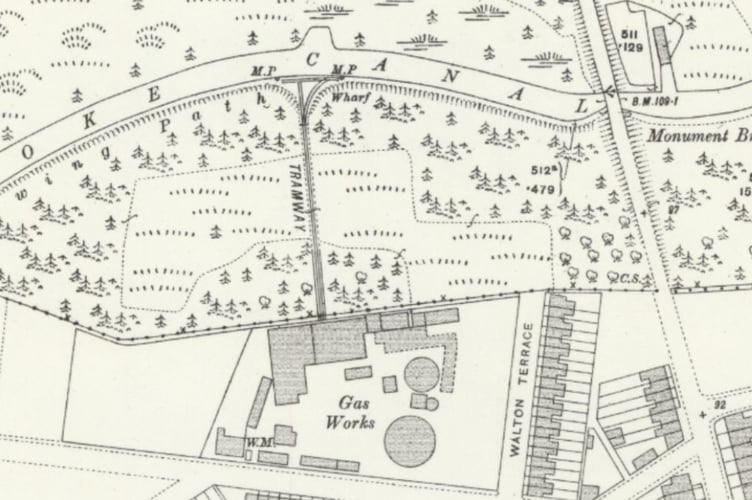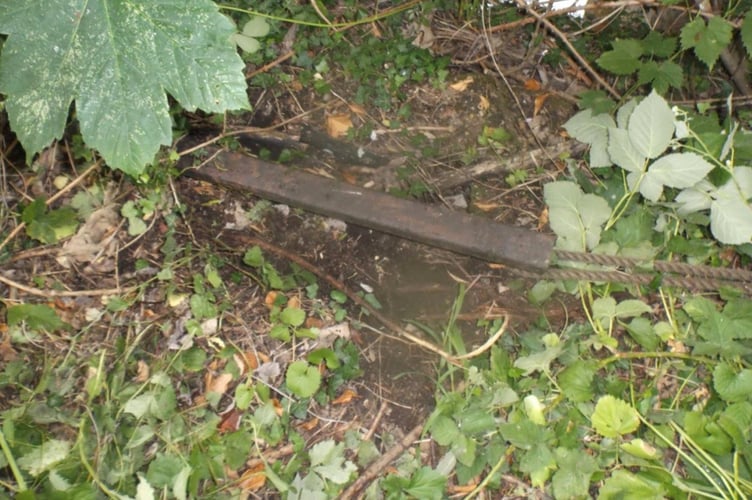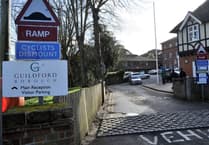DID you know there was once a tramway for transporting coal to Woking’s gasworks after it had been offloaded from barges on the Basingstoke Canal?
This week’s Peeps into the Past examines more of Woking’s industrial relics that researcher Mark Coxhead has been looking into.
Woking was comparatively late in having its own gas works compared to other towns in the 19th century.
The Woking & District Gas Company was incorporated in 1891 after it had bought one-and-a-half acres of land off Boundary Road from the London Necropolis Company for £649 10s 6d.
The gasworks opened on 9 June 1892 and included a 60ft high gas holder. Extensions in 1901 and 1905 included a second gas holder.
Around 14,000 tons of coal a year came to Woking by horse-drawn barge, to be burned at the works to produce gas. The tramway ran from the canal to the gasworks in a straight line and can be seen on old maps. However, I have yet to see a photograph of it.
The final load of coal for the gasworks via canal was transported in 1936. It was then that the gasworks stopped manufacturing its own gas. But the gas holders remained for a long time.

As noted in Paul Vine’s book London’s Lost Route To Basingstoke – which details the history of the Basingstoke Canal – with coal no longer required by Woking & District Gas Company, it resulted in a substantial proportion of the canal’s trade soon disappearing. By 1937, goods carried on the canal from its junction with the Wey Navigation at Byfleet was down to 13,000 tons a year – and by 1940 it was 2,250 tons a year.
From the 1890s, Charles Spanton had a timber yard with a 240-yard frontage along the canal, also just off Boundary Road.
The last commercial load to be carried on the canal was on 27 June 1949, when the horse-drawn barge, Gwendoline brought 20 standards of timber to C Spanton & Co’s yard.
At that time, the Harmsworth family, who had been connected with the canal since the 1840s, had just offloaded the waterway. Alexander James Harmsworth died on 27 December 1947 and his family decided to sell the canal. It was bought for £8,000 under the name of the New Basingstoke Canal Company, and thereafter fell into disuse until its revival began in the 1960s.

Another relic of the canal’s industrial age can be found at Weybridge. Parts of steel rails still exist, hidden in the undergrowth – they once carried a travelling steam crane.
In the 1930s, Alexander Harmsworth had a raised embankment constructed on the approach to Thames Lock, on the Wey Navigation. He may have owned or rented this piece of land.
The steam crane was used to unload bulks of timber that had come up the Thames from the Surrey Docks. The timber was then loaded on to Harmsworth’s barges bound for Spanton’s timber yard.
If you have some memories or old pictures relating to the Woking area, call David Rose on 01483 838960, or drop a line to the News & Mail.
David Rose is a local historian and writer who specialises in what he calls “the history within living memory” of people, places and events in the west Surrey area covering towns such as Woking and Guildford. He collects old photos and memorabilia relating to the area and the subject, and regularly gives illustrated local history talks to groups and societies. For enquiries and bookings please phone or email him at: [email protected]




